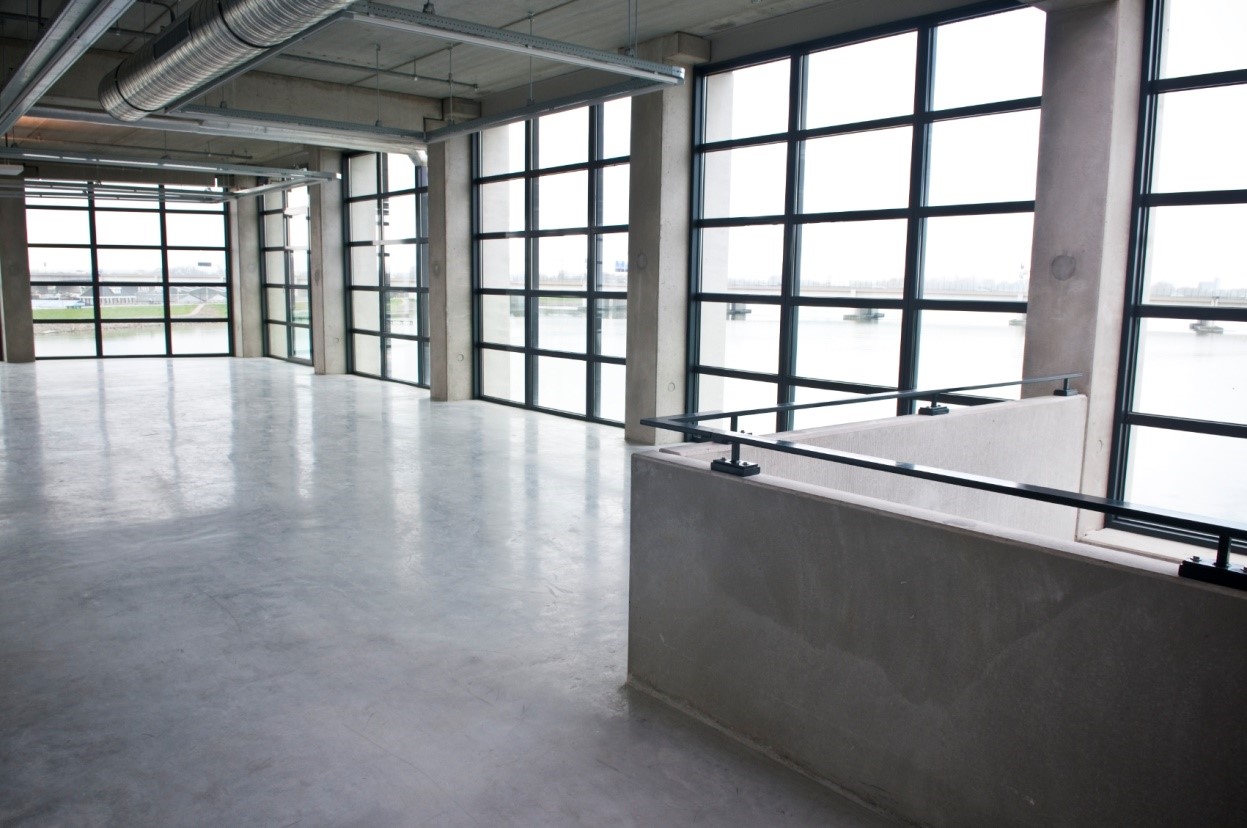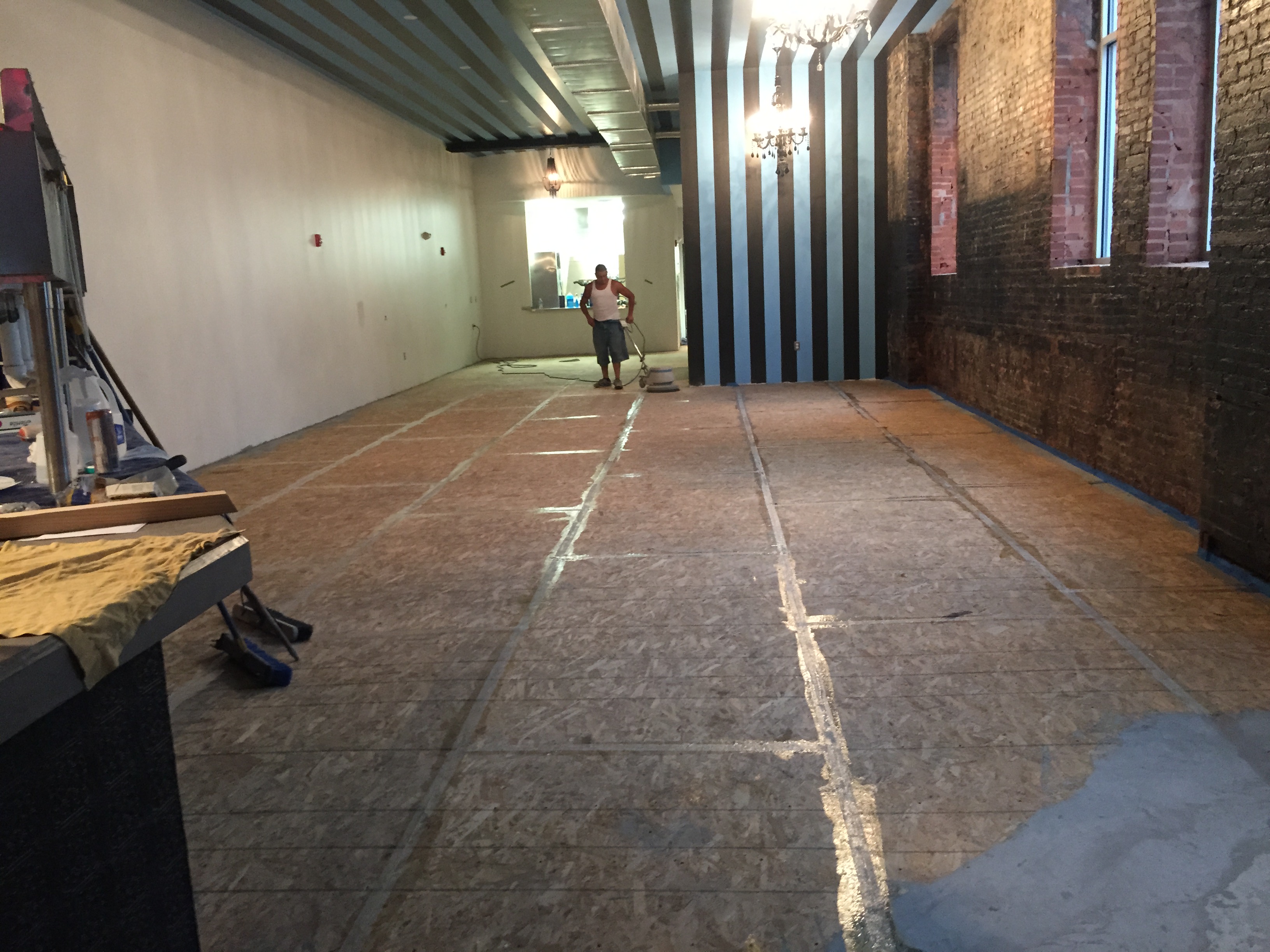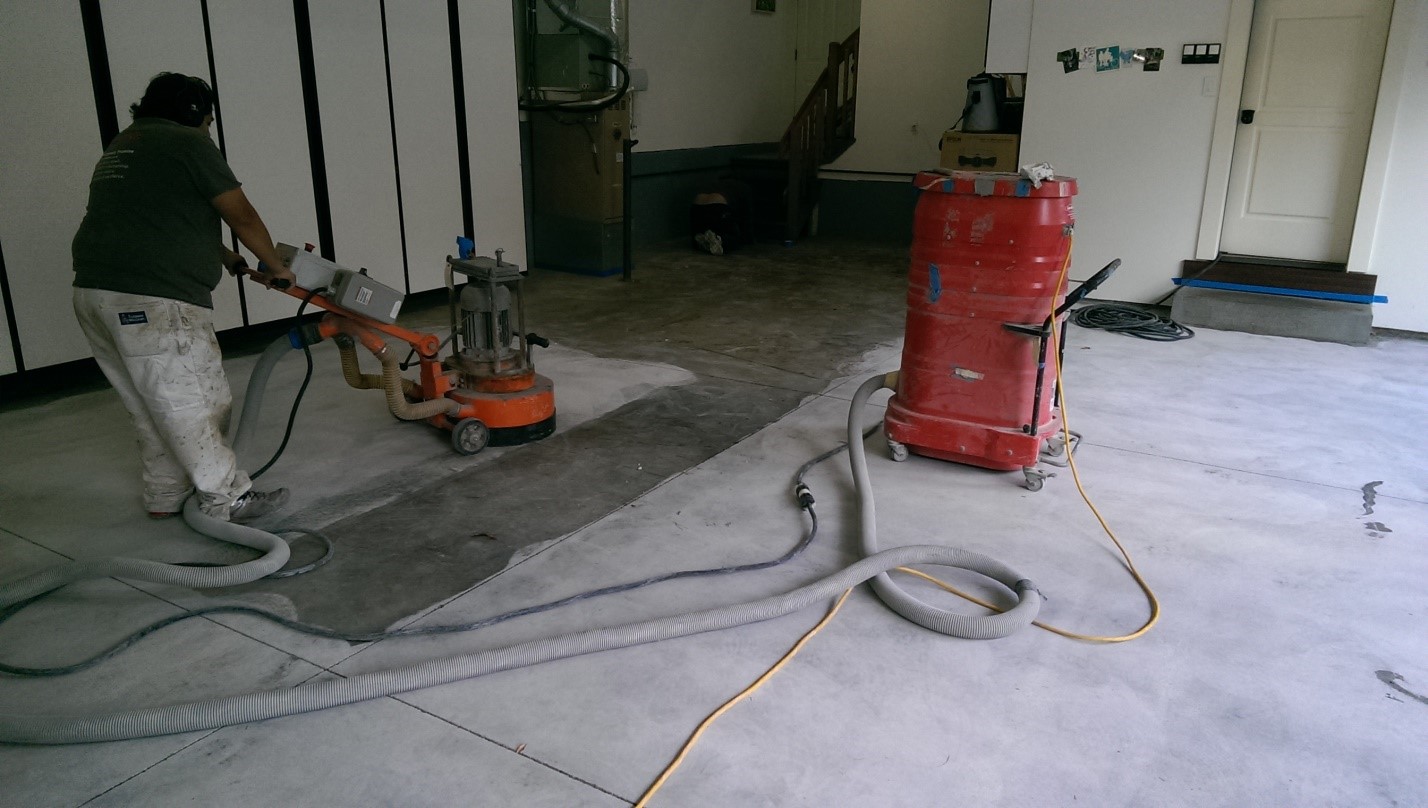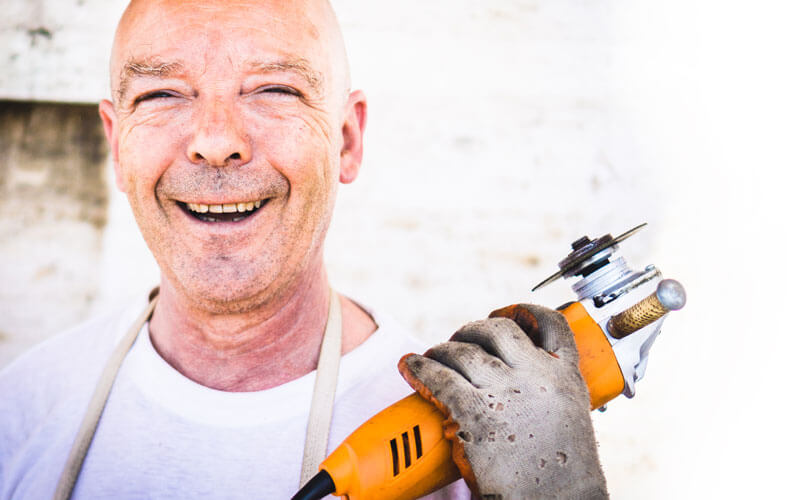Polished Concrete Service Guide
Review of the concrete polishing process and professional contractor services
Concrete Solutions
If you are searching for answers on how to restore or refinish your concrete floor, this educational guide will help you choose the best options for polishing or resurfacing your concrete floors.
Every floor is different. Therefore, concrete polishing experts provide numerous solutions depending on your needs.



Concrete Polishing Services & Options
Polished Concrete – Choose from 400 to 3,000 grit matte, gloss or high gloss finish.
Grind and Seal – Grind and seal with urethane or epoxy sealer. Prior to application of sealer, contractors can apply color stain to floor.
Coatings Removal – Concrete polishing equipment will remove floor paint, carpet glue, epoxy coatings. The grinding process will remove the top surface layer exposing a clean new floor.
Shot-Blasting – Most concrete polishing pros own or have access to shot-blaster equipment. A Shot-blaster is a floor prep machine that shoots thousands of tiny ball bearings at the surface to remove paint, glue and old epoxy coatings.
Moisture Mitigation Systems – Moisture-stopping process for new concrete. Apply to new concrete for fast track construction projects.
Self-Leveling Concrete Overlay – If you want a predictable floor, consider a polishable, self-leveling overlay. These are installed at ¼ to 3/8th inch thick. They can be integrally-colored and topically color-stained or dyed. They may also be sealed with water or solvent-based sealers, epoxies and urethanes
Self-Leveling Underlayments for Carpet, Tile and Hardwood – Grind, seal and apply self-leveling underlayments for new flooring types over concrete.
Decorative Overlays – Concrete polishing pros apply thin concrete overlays over old concrete. Overlays can be stained, dyed or created to look like tile when a thin coating is needed. 1/32nd inch to ¼ inch thick.
Concrete Staining – Decorative stained concrete is another way concrete polishing experts beautify concrete floors.
Metallic Epoxy Coatings – Polished concrete is the inspiration behind metallic epoxy flooring. They have the look of stained concrete with the durability of a urethane with non-slip seamless finish.
Industrial Epoxy Coatings – After grind and repair to floors, contractors apply protective epoxy coatings. Many options are available for garages, basements, warehouses, restaurants and retail stores including chemical resistance.
Concrete Repair – Crack Repair, expansion joint fillers and spalling concrete are all part of the services polished concrete professionals provide.
The Concrete Polishing Process
The process of polishing concrete requires specialized equipment for grinding and honing the surface.
Concrete polishing machines vary in size and weight. There are hand grinders for small areas and edges. There are walk-behind machines that typically range from 300 to over 1,000 lbs. Both hand tools and walk-behind concrete polishing machines have attached high-volume vacuums. The result is a dustless system.
The polishing process includes going back and forth over the surface in numerous steps, sort of like cutting your lawn.



Polished Concrete Step-by-Step
Step 1: Concrete Grinding – The grinding process uses course diamond blades that cut through the top layer. Concrete polishing contractors will start the grinding process with the appropriate grit depending on the surface. Frequently, they use course diamonds to remove carpet glue, mastic, paint or epoxy coatings. These will range from 25 to 80 grit.
This level of grinding can also be part of a floor preparation system if you are considering a self-leveling concrete overlay or epoxy coating.
This grinding level will also expose the aggregate in the concrete. This grinding level removes the top layer of approximately 1/32 to 1/16th inch though it is possible to remove more of the surface.
Step 2: Finer Grinding – The second step is to use a finer diamond-grinding blade. This may be 80-100 grit. This step is the smoothing process. At this level, you will notice cracks, blemishes and imperfections in the concrete.
During this step, options include staining the concrete in a decorative color and then sealing the floor with an epoxy or urethane. This is the grind and seal process that has become very popular in recent years.
Step 3: Honing the Surface – In the third step, your polished concrete contractor would use a diamond pad with a 200 grit. The floor appearance will improve but still without a shine.
Step 4: Densifying The Surface – A 400 grit diamond polishing pad is used along with a liquid densifier. If you recall from the top of this page, I explained about the curing process of concrete and porous characteristics.
Porous air holes will break the light reflectivity of the polish process. The solution is to apply a liquid densifier. A densifier creates a chemical reaction in concrete reducing the size of air holes (reducing porosity) providing more surface area for the final polishing steps. It also enhances the strength of the cement surface.
Step 5: Final Polishing Steps – After application of the densifier, the final polishing steps commences with the options for a 400, 800, 1500 and 3,000 grit. If you want a matte finish, the process uses 400 to 800 grit. For a glossy finish, concrete professionals utilize up to 1,500 to 3,000 grit.
Decorative Concrete Polishing Solutions
The options are many for creating a beautiful, decorative polished concrete floor. Saw cuts can be made with unlimited design patterns in the shape of tile with borders or unique flowing designs. Color options include earth tones of brown, green or blue can be created using acid stains and dyes. Water based dyes produce soft pastels while solvent based dyes produce vibrant colors. Custom floor graphics are available for polished concrete floors, overlays and epoxy coatings.
What is The Cost of Concrete Polishing?
The cost of polished concrete varies from $2 to $10 per square foot depending on numerous factors. Grind and seal flooring can range from $2 to $7 per sq. ft. depending on factors mentioned below.
If you need an overlay, they typically start at $3 per square foot and up to $10 per sq. ft. or more.
Factors that affect the cost include condition of the floor, size, level of polish, obstacles such as stairs, columns, floor vents, cracks, repair and decorative options.
Can All Concrete Floors Be Polished?
Virtually all concrete floors can be polished; however, there are factors where you may want to consider other options.
If your concrete is old, cracked, damaged and requires a decorative finish, concrete polishing may not be the ideal choice.
Since concrete polishing equipment is large and heavy, access to small spaces and basements may be an impediment to polishing, thus making it not possible for these areas.
Tight spaces and edges can be a problem. Walk-behind machines cannot get right up to the edges of a wall or small space such as an entrance.
When space is tight, hand grinding and polishing will provide a solution; however, the finish of a hand polish near edges versus results of a 1,000-lb. machine will not be an exact match. This should be discussed during the analysis and pricing of your project to avoid misunderstandings at end of project.
Is All Concrete The Same?
The answer is no. This is important to know when considering polished concrete services.
Concrete is mixed with lime, ash, sand, aggregate and water. Not every batch will be identical. Humidity and temperature can alter the curing process.
Aggregate is not always the same. As you’ll see below, grinding concrete is the first step in the process. Exposing aggregate is seldom consistent. Some areas may expose a lot of aggregate; other areas within the same floor may have little. The result is no two floors are the same. Many people like the unique result. Others do not like the idea of paying for an unpredictable result.
There are also mixtures that may be added to enhance cure times or slow cure times in hot temperatures.
When concrete cures, it leaves behind tiny veins or capillaries. As a result, concrete is porous.
How Do You Maintain Polished Concrete and Overlays?
If you choose concrete polishing, the floors can be occasionally buffed with polishing pads to maintain their appearance. Clean with a neutral pH cleaner. Avoid using alkaline or acidic cleaners that will dull the shine and damage the concrete.
If you choose the polished concrete look with a self-leveling concrete such as Ardex SD-M, you can protect and maintain the floor with a high solid wax coat.
Floor waxes are available with a high solid over 30%. The floor wax can be diluted and applied with a microfiber mop. They can be burnished with high speed buffers. Burnishing serves to melt the wax into the floor with a high-speed buffing to enhance durability.
If the wax coat loses luster due to scratching from foot traffic, the wax coats can be stripped and recoated. Strip the top layer of the wax coat then reapply 2 new coats. Following this process to strip one coat, reapply two coats over time will create numerous layers of wax. Each time you follow this process, you will continue to build wax coats enhancing the durability and life of the floor.

We are polished concrete flooring experts, let us Help You
States & Cities We Service
(click on state below to see cities)
California
Colorado
Connecticut
Florida
Kentucky
New Hampshire
- Manchester
- Nashua
New Jersey
New York
- New York City
- Brooklyn
- Bronx
- Bushwick
- Elmhurst
- Jackson Heights
- Forest Hills
- Queens
- Jamaica
- Flushing
- Harlem
- Manhattan
- Levittown
- Hempstead
- Huntington
- Oyster Bay
- Islip
- Brentwood
- Smithtown
- Southampton
- Brookhaven
- New Rochelle
- Yonkers
- Mount Vernon
- White Plains
- Buffalo
- Cheektowaga
- Tonawanda
- Rochester
- Irondequoit
- Syracuse
- Albany
- Schenectady
- Utica
Oregon
Vermont
- Manchester
- Nashua